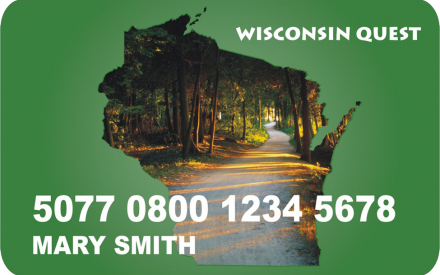As we get older, our diet and activity may change but they are just as important as ever. Older adults still need just as many vitamins, minerals, protein and other nutrients – sometimes more! Some nutrients are especially important like the vitamins B12, folate, and D, the minerals iron, potassium, and calcium, as well as protein and fiber. Use the food groups below to learn more about how to get these nutrients in your diet.
Learn the food groups
Fruits and Vegetables
Aim to fill half of your plate with fruits and vegetables.
Fruits and vegetables are packed with the fiber, B vitamins, and potassium that older adults need. These nutrients help to lower the risk of heart disease, control weight and keep you regular.
Choose a variety of fresh, frozen, or canned fruits and vegetables with deeply colored flesh. Canned fruit should be packed in 100% juice and canned vegetables should be low-sodium options.
Protein Foods
Protein foods help maintain strong muscles and keep you active.
Protein, iron and vitamin B12 are all more difficult to get enough of as we age. Lean meats have each of these nutrients and eating them can help you avoid feeling fatigued or tiring quickly. There are also lots of other healthy protein foods like eggs, beans, nuts, seeds, and soy products.
Whole Grains
Eat whole grains regularly to get fiber and B vitamins from your diet.
These nutrients will help to keep you regular, control weight and reduce the risk of heart disease. Fortified breads and cereals are an especially great way to include iron, folate, calcium, a more easily absorbed form of vitamin B12 (often older adults don’t absorb this nutrient well from foods) and other key nutrients.
Dairy
Calcium and vitamin D are very important to help maintain strong teeth and bones.
Fat-free and low-fat milk, yogurt, cheese, and calcium-fortified soy beverage provide calcium, vitamin D and protein. Eating three servings of dairy foods daily is a great start to getting enough calcium, vitamin D and protein.
Oils
Oils are not a food group of their own, but they are part of a healthy diet because they contain essential fatty acids and vitamin E.
Common healthy oils include olive oil, canola oil, peanut oil, and sunflower oil. Some foods like nuts, seeds, seafood, olives, and avocados are naturally high in healthy oils.
Other important parts of the diet
Fluids
Drink plenty of fluids throughout the day to stay hydrated. Try to have a drink before you are thirsty. Water, tea, coffee, milk, and soups are all great options to help get enough fluid.
Herbs and Spices
Include a variety of herbs and spices in order to make meals interesting and enjoyable with different colors, flavors, and smells. Use herbs and spices to reduce the need to add salt to food.
Continue to enjoy food
As we get older and may be living alone, food can become less appealing and it is not uncommon to eat too little. Many people can become bored with food over time and may start to eat less than they need.
Keep food and meals interesting by trying new foods, recipes, cooking methods, or herbs and spices. You can also use meals as a social time. Start a group of friends or family to have meals together once or twice per week.
Food assistance programs
Don’t wait to reach out if you need physical or financial help to get meals. Congregate or community meals can also be a great way to get out and enjoy the company of others. Contact these resources for help:
Administration on Aging – home delivered and congregate meals
- 1-800-677-1116 or
- www.eldercare.gov/
Wisconsin Elderly Nutrition Program – community dining and home delivered meals
- https://www.dhs.wisconsin.gov/aging/nutrition.htm
To find community dining centers and home delivered deals in your area:

 How to shop with SNAP benefits at Wisconsin's farmers markets
How to shop with SNAP benefits at Wisconsin's farmers markets Nutrition for newborns: birth to six months
Nutrition for newborns: birth to six months Helping toddlers try vegetables
Helping toddlers try vegetables Feeding your baby from six to twelve months
Feeding your baby from six to twelve months


